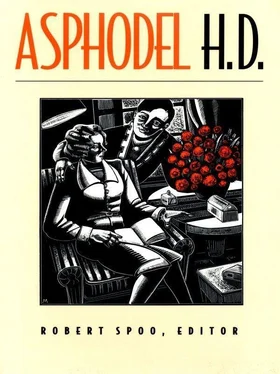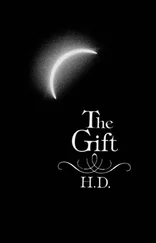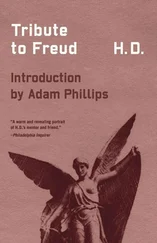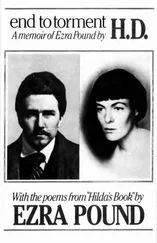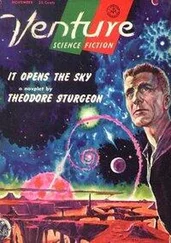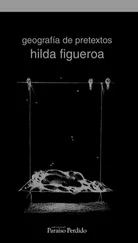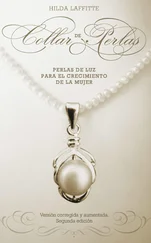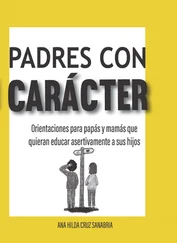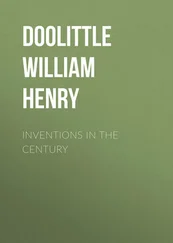Asphodel follows Hermione Gart (the H.D. figure), Fayne Rabb (Frances Gregg, H.D.’s friend from Philadelphia), and Fayne’s mother, Clara, on their trip to Europe in 1911–1912, 11first to France and then to London where Hermione contends with the domineering George Lowndes (Ezra Pound), the young American poet to whom she had been engaged for a time back home and who now introduces her to his circle of literary friends in London. Asphodel is a valuable and intimate account of female expatriation, a portrait of young artists whose experiences are very different from those of their male counterparts. More vulnerable than men to familial threats and manipulation, deracinated female artists feel a correspondingly greater pressure to marry and legitimate their expatriation, to purchase freedom with yet another compromise with patriarchy.
Rather than succumb to this pressure, Hermione urges Fayne, who is planning to return to America, to live with her in London in a bohemian ménage of their own fashioning. The impassioned speech in which Hermione affirms her love for Fayne (“ ‘I, Hermione, tell you I love you Fayne Rabb’ ” [p. 52]) and defends the lesbian lifestyle she imagines for them is the climax of part 1. Despite her eloquence, however, she fails to persuade the defensively spiteful Fayne, and her shock is soon compounded when Fayne writes from America that she is going to be married to a respectable lecturer on literature. Part 1 of Asphodel ends with the ominous suicide in Paris of a friend of George’s, an unmarried American expatriate named Shirley Thornton (based on Margaret Cravens, who killed herself in June 1912) who had come to France to study piano. The final paragraphs of part 1 hint at Hermione’s temptation to avoid Shirley’s fate by marrying a young English poet she has met, Jerrold Darrington (Richard Aldington).
Part 2 jumps ahead to 1915. Now married to Jerrold, Hermione is recovering from the stillbirth of her child. The war has been raging for some time, splitting consciousness into what Hermione calls “pre-chasm” and “chasm” thinking, a fissure that is dramatically figured by the temporal gap between parts 1 and 2. Like Rose Macaulays Non-Combatants and Others and Rebecca West’s The Return of the Soldier, Asphodel is in part a war novel that focuses on women’s lives at the home front. It also traces, as other works by H.D. do, the transformation of the Aldington figure, after his enlistment in the army, from androgynous “faun” and poetic brother into a jaunty, lascivious Mars who is unfaithful to Hermione. It seems to Hermione that Jerrold’s civilian self — the person who had restored her confidence in her writing — has been buried beneath a lava flow, along with other prewar treasures like art, beauty, and love; life is now a matter of zeppelin raids, tabloid jingoism, and “guns, guns, guns, guns.” Estranged from Jerrold, Hermione joins Cyril Vane (the Cecil Gray figure) in Cornwall and soon learns she is pregnant with Vane’s child.
Inspired by legends of Druids and Phoenicians, Hermione fancies herself a “Morgan le Fay” and her child the product of a visit from the god Helios — a private myth that gives Hermione a kind of Madonna/witch identity, restoring to her some of the playfully subversive innocence she had enjoyed with Fayne. (George had said in part 1 that she and Fayne would have been “burned in Salem for witches” [p. 50].) Hermione decides to keep the baby and, following a period of solitary self-communion, meets the wealthy but troubled Beryl de Rothfeldt (the Bryher figure), who helps her during the later stages of her pregnancy. After a frightening encounter with a jealous, vengeful Darrington back from the trenches, Hermione succeeds in breaking away from him and establishing with Beryl the very ménage that Fayne Rabb had earlier renounced, except that this one is augmented by Phoebe, Hermione’s daughter, whom Beryl promises to take care of as if the child were a “puppy.” Salvation is mutual at the end of Asphodel : Hermione has escaped a series of destructive relationships, and Beryl has promised to stop threatening suicide.
Even so brief a synopsis as this suggests that Asphodel is less an early version of Madrigal than a snugly fitting sequel to H.D.’s autobiographical novel Her (written in 1926–1927 and first published by New Directions in 1981 as HERmione ), the story of Hermione’s life in Philadelphia in the period before her departure for Europe. H.D. herself called Asphodel “a continuation of HER,” 12and there is evidence that she revised Asphodel around 1926–1927, possibly to recast the 1921–1922 version as an aesthetically consistent sequel to Her . 13 Asphodel completes the Ezra Pound and Frances Gregg stories begun in Her , and extends and consummates that novel’s madrigal-like rhythm of relationships, the weaving in and out of variations on the beloved. The ambiguous image of Fayne Rabb waiting alone in Hermione’s “little workroom” at the end of Her is clarified in Asphodel , where Fayne indeed continues to blight Hermione’s artistic hopes and her emotional life, just as George Lowndes has done. It is not until Beryl arrives on the scene that Hermione can begin to connect her art with her emotional and domestic needs. Hermione’s lonely walk through the snow at the end of Her is rewritten at the conclusion of Asphodel by a new domestic economy that converts the demoralizing love triangles in which she has been enmeshed into the “triptych,” to use the novels phrase, of Hermione, Beryl, and the infant Phoebe, an unlikely holy family but a mutually supportive one. In this sense, the Her-Asphodel sequence is an extended tribute to Bryher. That Asphodel has a candid lesbian theme may have been one reason that H.D. wanted typescripts of the novel destroyed; that it is the story of H.D.’s journey to a life with Bryher probably made the two women reluctant to put a match to all copies.
In terms of aesthetic construction, Asphodel , like many works of high modernism, reveals a dual impulse toward strong formal control and experimental abandon. For example, the two parts of Asphodel are almost geometrically balanced, each containing fifteen chapters of comparable dramatic and thematic development. Yet the writing style is dense, elusive, digressive; paragraphs are unusually long, more like movements of a musical composition than units of narrative; dialogue is expressively congested and often not clearly attributed. Authorial voice and point of view are generated almost entirely from Hermione’s perspective, from her intense, sometimes feverish stream of consciousness. Asphodel is an important experiment in “stream-of-consciousness” technique, yet H.D. adopted neither the psychological immediacy of Joyce’s “interior monologue” nor the authorially mediated, third-person-limited voice of Woolf, but rather a fluid, shifting combination of these modes, a style capable of veering in the space of a few pages from third-person-limited narration (“she was somehow dehumanised and he was seeing it” [p. 141]) to a generic, historical “you” (“Wine went to your brain and you knew there was no division now” [p. 142]) to first-person memoir (“We were two angels with no wings to speak of” [p. 142]) to sudden, visceral interior monologue (“God sends things to people” [p. 143]).
This kaleidoscopic (or perhaps cinematic) effect is occasionally punctuated by passages of direct, urgent authorial address to the reader, particularly when war is the subject: “some god had set a head there in a restaurant (imagine it but I know you can’t quite realize it) in that odd 18, 18, 18. Do you know what I mean? In 1918 there was one head. . ” (p. 141). These oscillations of authorial voice reflect the uncertain boundary between autobiographical fiction and personal memoir, between the writing subject and the self as a projected, dramatized “other.” 14On the whole, H.D. moves skillfully between these narrative positions or stances of the self, so skillfully that she seems to fulfill one of Baudelaire’s conditions for modern art: “Qu’est-ce que l’art pur suivant la conception moderne? C’est créer une magie suggestive contenant à la fois l’objet et le sujet, le monde extérieur à l’artiste et l’artiste lui-même.” 15
Читать дальше
